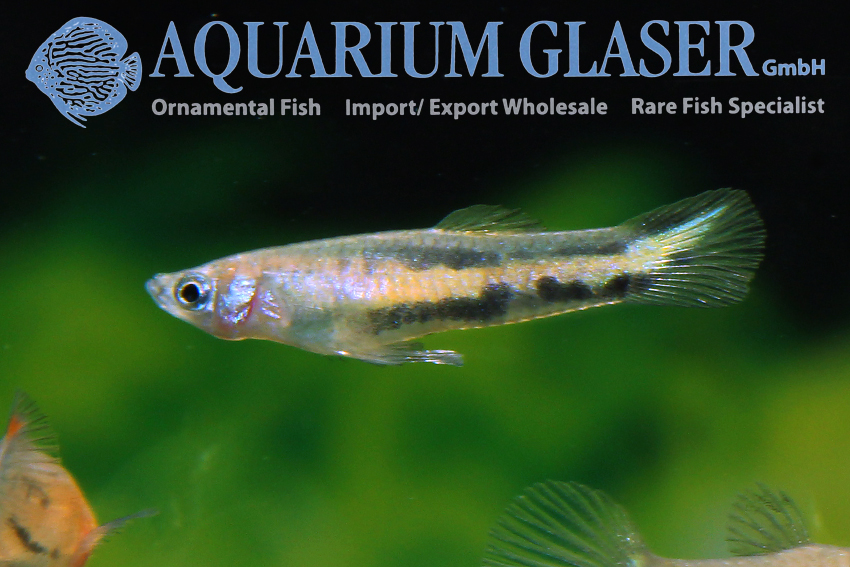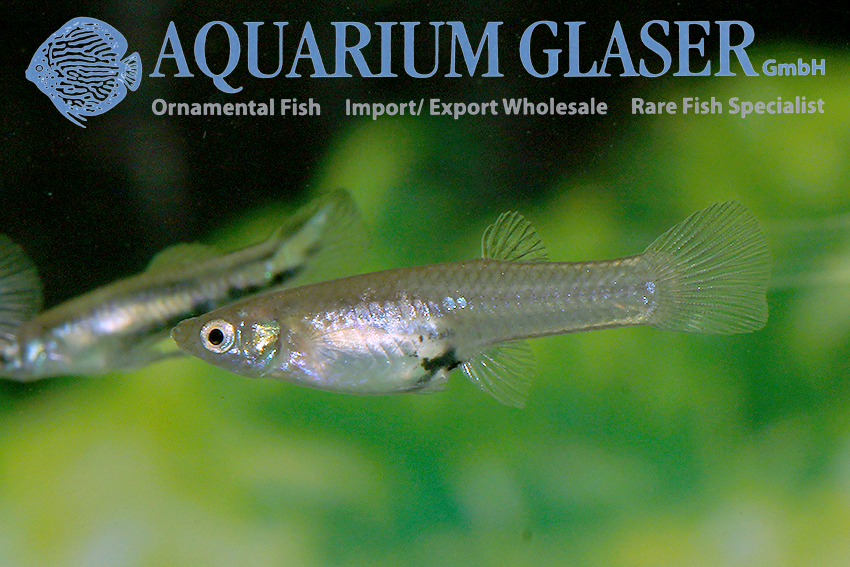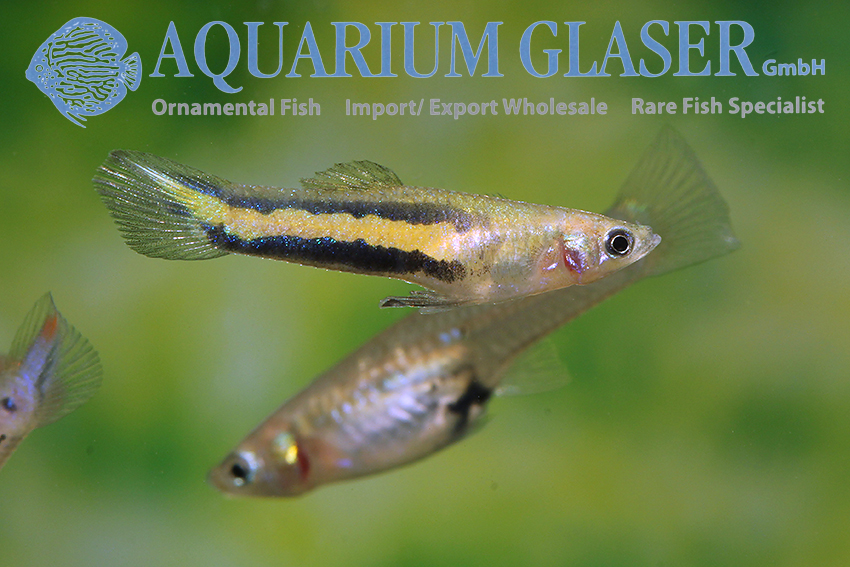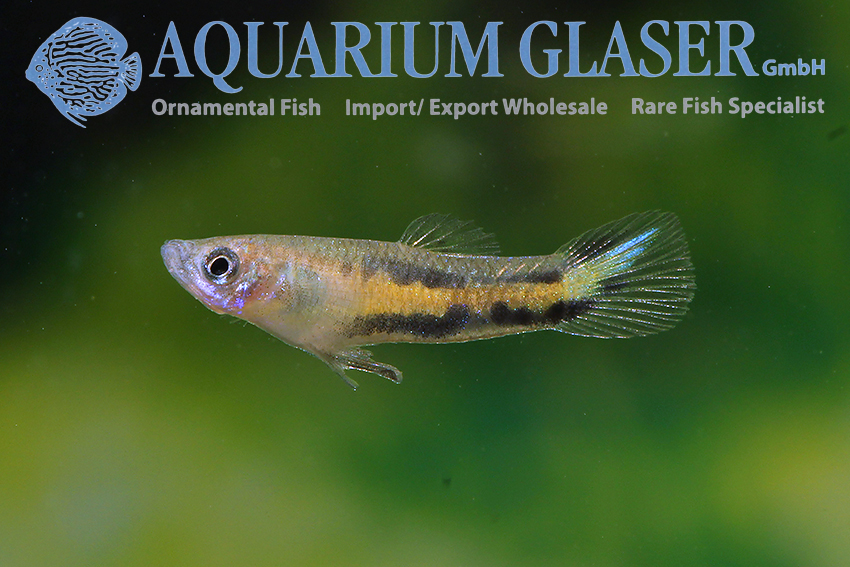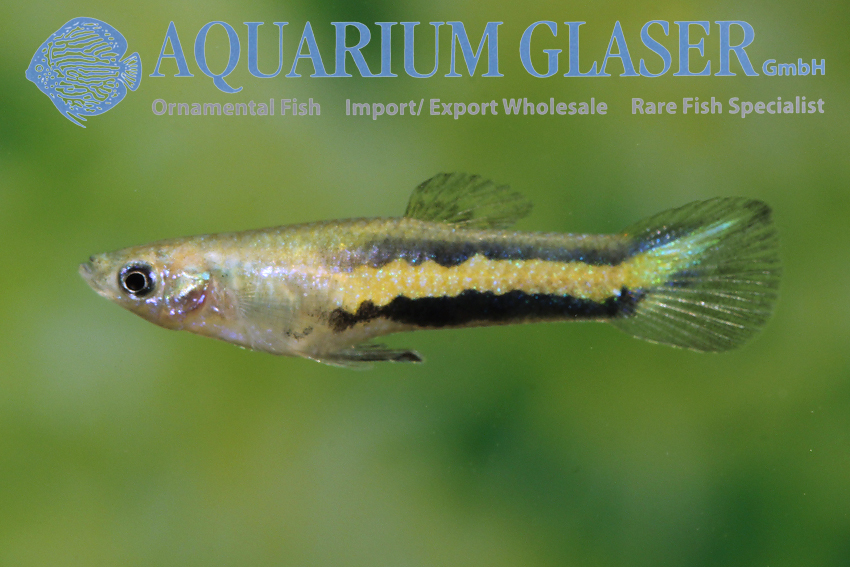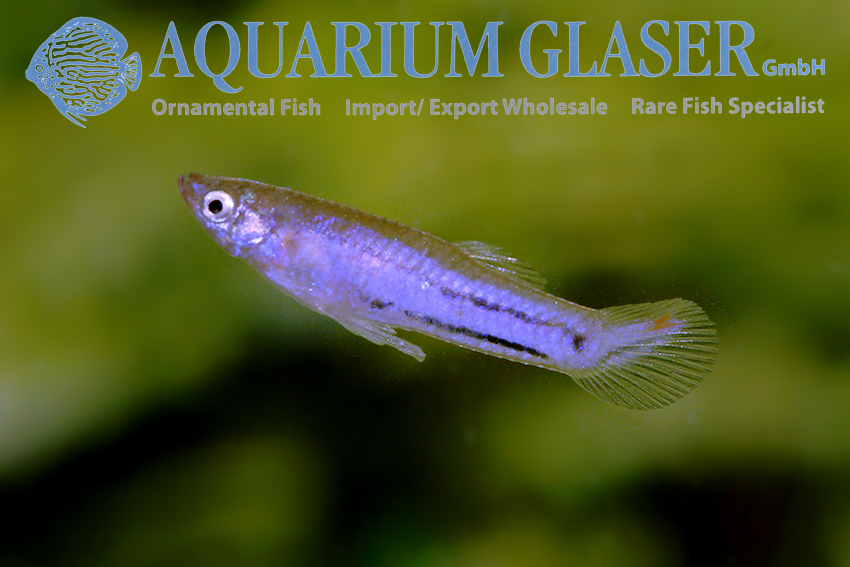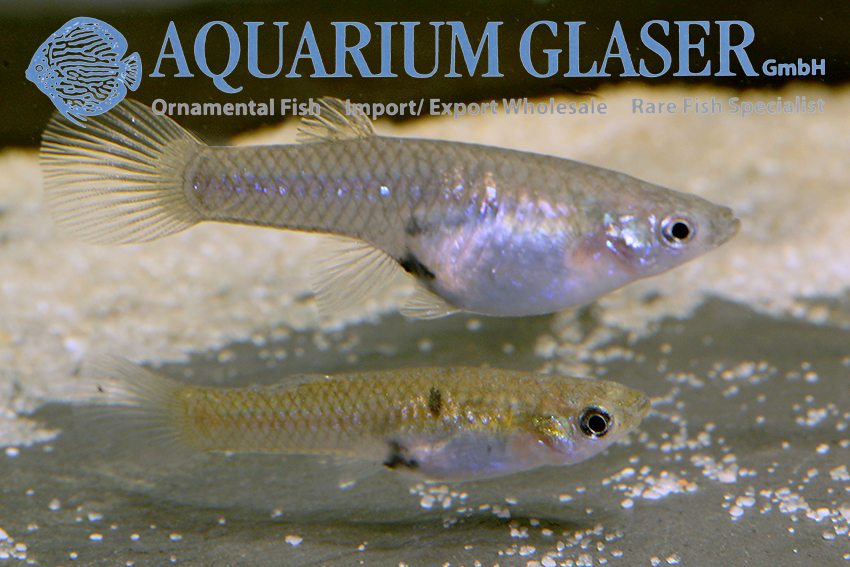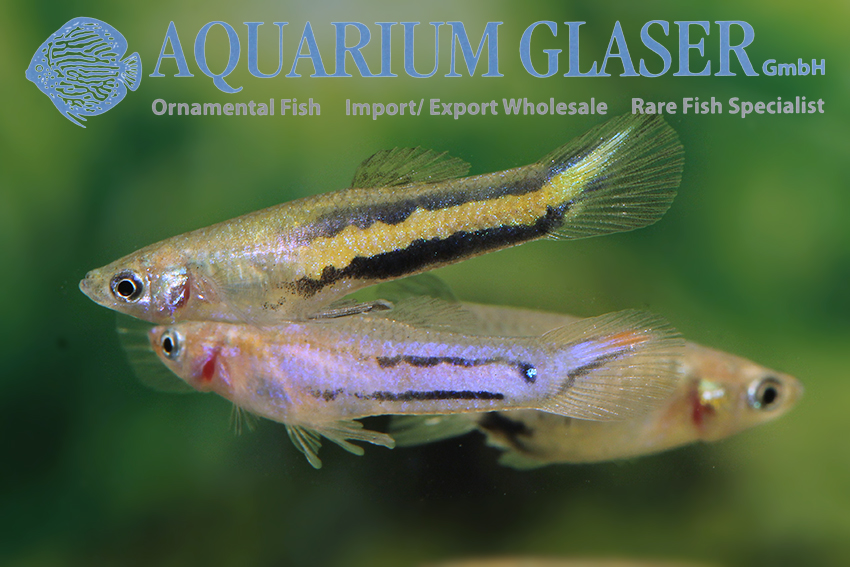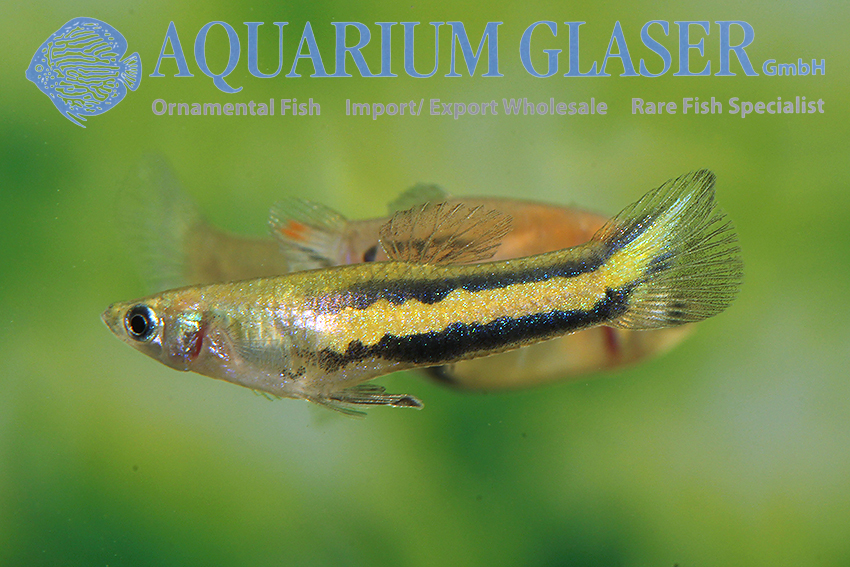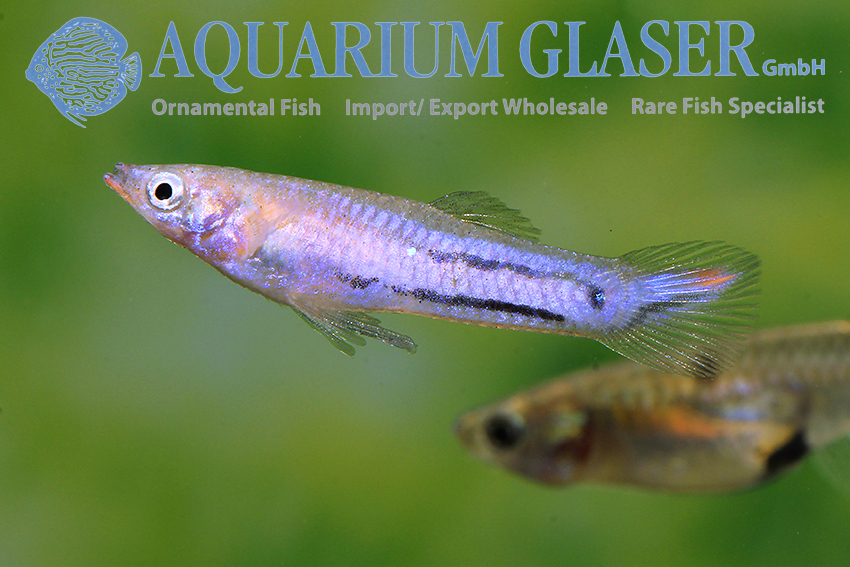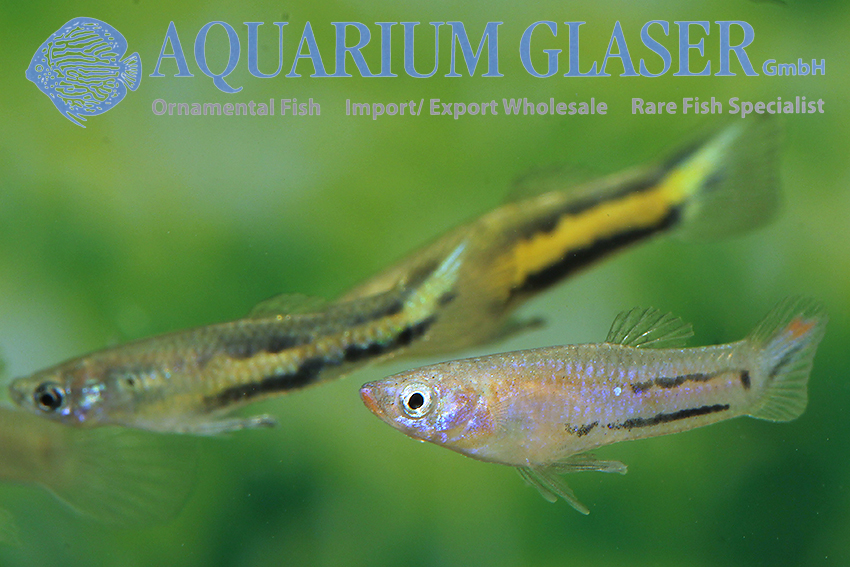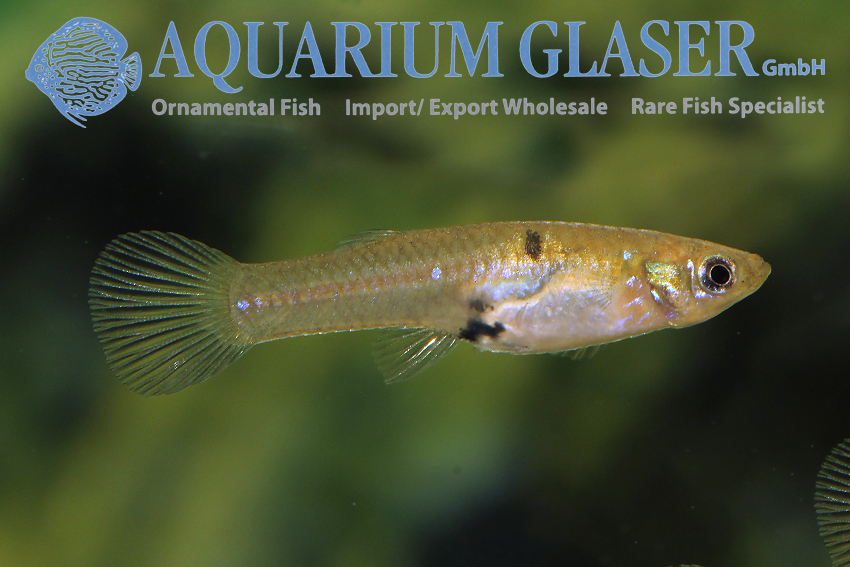Micropoecilia parae belongs to the very few fish species, whose breeding in the aquarium over numerous generations has not succeeded so far. Basically the reproduction of the viviparous fish is not difficult, but from generation to generation the animals become smaller and smaller, until finally no further breeding is possible, because the fish die before reaching sexual maturity.
The reason for this is unknown. Two main factors are discussed: feeding and lighting. Since these problems do not occur when breeding in outdoor ponds in Southeast Asia, the lack of certain components of sunlight – probably from the UV range – seems to be the key to solving the problem. The German offspring we offer are large, strong animals that do not yet show any signs of this degeneration.
The care of Micropoecilia parae is easy. The beautiful animals, which superficially remind somewhat of Guppys, do not cause any problems. The animals, which are very common in the wild (Guyana countries to Brazil) and widespread near the coast, do not make any special demands on the water composition. Some populations even tolerate light brackish water. An exciting phenomenon is the polychromatism of the males, the biological meaning of which is still completely unknown. The offspring we can offer right now are yellow or blue longitudinally striped, but there are also red, tabby, solid color and spotted males (see https://www.aquariumglaser.de/en/fish-archives/beautiful_new_varieties_of_liverbearers_arrived_en/ and https://www.aquariumglaser.de/en/fish-archives/micropoecilia_parae_red_tiger_en/).
For our customers: the animals have code 268472 on our stocklist. Please note that we only supply wholesale.
Text & photos: Frank Schäfer





